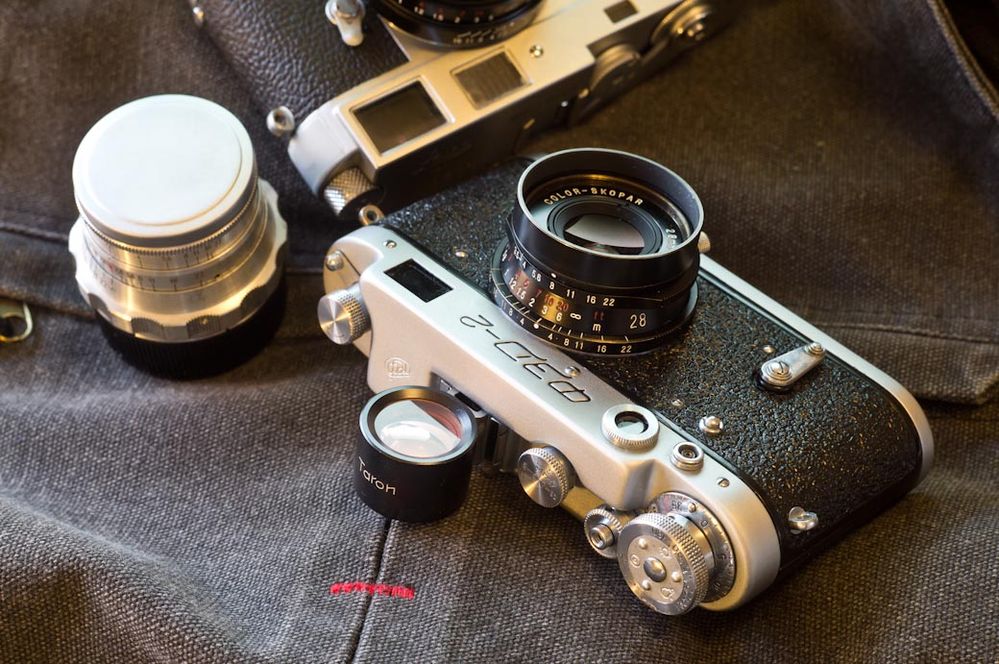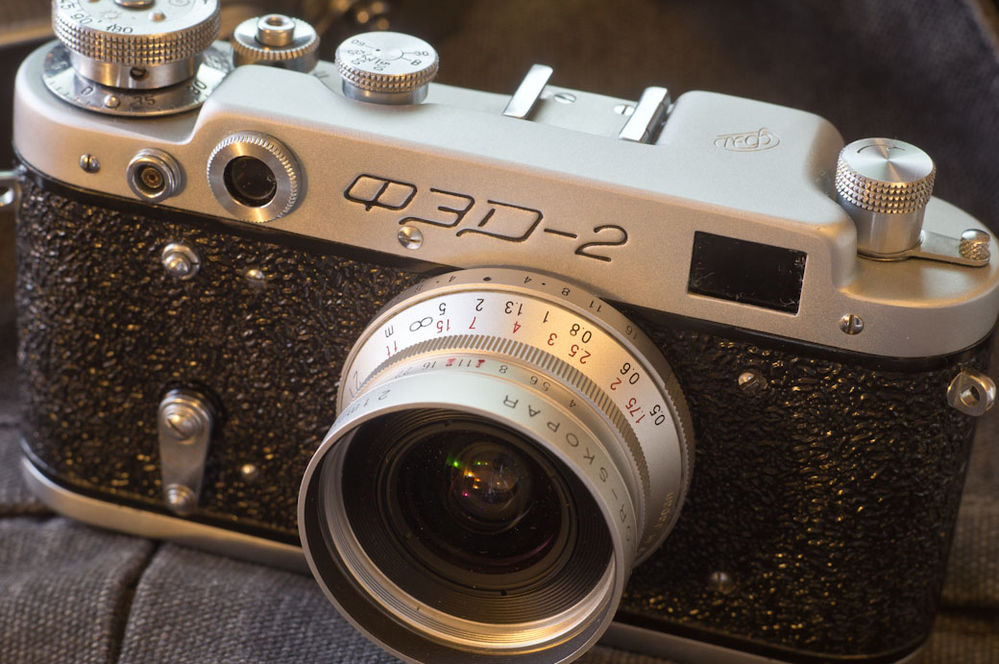Sykomor
Established
Home again after a vacation I took some pics of my new FED-2 and shot a first test roll that is in development right now. I will probably use it with the CV28 in the streets.


During cleaning I noticed that I would probably loose a few frames as the winding not always tensions the shutter. It happens maybe 1 in 100 so it’s not a big deal but wolves3012 kindly informed me that this probably is going to get worse over time. He also pointed at the cause which is here. The two pins of the winder are not engaging.

He also informed me that the solution is to turn the shutter-dial a little counter-clockwise after releasing the shutter or before winding. … the short time solution that is. If I will like the new camera I will probably want to make a permanent fix to it and to do so I will have to get a new bottom bearing. If I decide to fix it I will follow up on this thread. All pointers appreciated.


During cleaning I noticed that I would probably loose a few frames as the winding not always tensions the shutter. It happens maybe 1 in 100 so it’s not a big deal but wolves3012 kindly informed me that this probably is going to get worse over time. He also pointed at the cause which is here. The two pins of the winder are not engaging.

He also informed me that the solution is to turn the shutter-dial a little counter-clockwise after releasing the shutter or before winding. … the short time solution that is. If I will like the new camera I will probably want to make a permanent fix to it and to do so I will have to get a new bottom bearing. If I decide to fix it I will follow up on this thread. All pointers appreciated.

